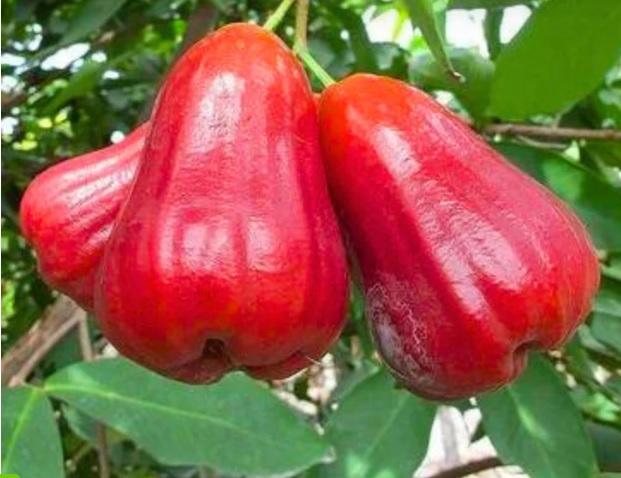The Thai red chamba (often referred to as Thai Red Chamba or Chamba fruit) is a variety of the chamba fruit, also known as the Mangosteen. It is a tropical fruit, renowned for its sweet, tangy, and aromatic flavor. Here are some details about this fruit:
Appearance:
- Color: As the name suggests, the Thai red chamba has a reddish or red-purple skin, which sets it apart from the regular mangosteen variety that has a more purple exterior.
- Size: The fruit is typically round and small to medium in size, about 5–7 cm in diameter.
- Skin: The outer skin is thick and tough, with a deep red color when fully ripe. The skin is usually in segments that can be easily broken open.
Taste and Texture:
- Flavor: The pulp is sweet, slightly tangy, and has a floral taste, often described as a combination of peach, pineapple, and citrus.
- Texture: The fruit's flesh is juicy, soft, and white, segmented into wedges. It is similar in texture to the regular mangosteen but may vary slightly in sweetness and acidity depending on ripeness.
Nutritional Benefits:
- Rich in Vitamin C: Like mangosteen, Thai red chamba is packed with vitamin C, which helps boost the immune system and act as an antioxidant.
- Fiber: It contains dietary fiber, which aids in digestion.
- Other Nutrients: It is also a source of minerals like potassium, calcium, and magnesium, contributing to various health benefits such as bone health and heart function.
Cultivation:
- Origin: This variety of chamba is mainly grown in Southeast Asia, including Thailand, where it thrives in tropical climates.
- Season: Thai red chamba fruits are typically harvested during the wet season, which varies depending on the specific region.
Culinary Uses:
- Fresh Consumption: The fruit is most often eaten fresh, directly after peeling the skin and separating the segments of white pulp.
- Desserts and Juices: The fruit can be used in smoothies, juices, jams, or as an addition to fruit salads and other desserts.
- Traditional Medicine: In some cultures, the fruit’s rind and other parts are used in traditional remedies, although this is more common with the regular mangosteen variety.

